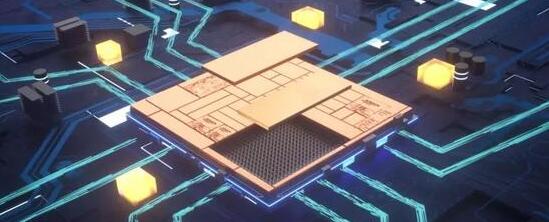In modern electronic devices, the system-on-chip (SoC) and the central processing unit (CPU) are two core components that differ significantly in function and design. Understanding the difference between SoC and CPU is essential to gaining insight into the construction and performance of electronic products.
SoC and CPU
System on Chip (SoC)
SoC, or System on Chip, is an integrated circuit that encompasses all components of a complete system, including embedded software and peripherals. It is designed for specific applications, combining multiple functions into a single chip. The components of an SoC include:
Processing Units: This includes the CPU, GPU (Graphics Processing Unit), and DSP (Digital Signal Processor) for various processing tasks.
Storage: Integrated flash memory and RAM provide the necessary storage capabilities.
Communication Interfaces: Such as Wi-Fi, Bluetooth, and Ethernet for connectivity.
Peripheral Controllers: These manage additional components like LCD controllers, UART, and NAND controllers.
Central Processing Unit (CPU)
The CPU, often referred to as the arithmetic controller, is the core component that performs calculations and executes instructions. In today’s technology landscape, pure CPUs are rare; most processors are integrated into SoCs.
Advantages of SoC and CPU
1.SoC Advantages
SoCs offer high integration, combining multiple functionalities on a single chip, which reduces space and power consumption. They are cost-effective for large-scale production and are optimized for specific applications, enhancing overall performance.
2.CPU Advantages
CPUs are versatile and suitable for a wide range of computing tasks. Their independence allows them to work with various peripherals, making them adaptable to different needs. Additionally, the mature ecosystem of software support and development tools makes CPUs a reliable choice.

The difference between SoC and CPU
o – preposition, lowercase
SC- noun, capitalized
1.1 SoC (System on Chip): It is called a system-on-chip, also known as a system on a chip, which means that it is a product, an integrated circuit with a proprietary purpose, which contains all the contents of a complete system and embedded software.
1.2 CPU = arithmetic controller. There are almost no pure CPUs now, they are all SoC.
1.3 Chip development from CPU to SoC
1.4 Peripherals (external devices): That is, other components besides the CPU, such as LCD controller, UART, and Nand controller. . .The CPU connects various external devices through external buses to form an SoC.
1.5. For example, ARM produces CPUs. It sells the CPU designs it produces to other companies, and other companies add the various peripheral controllers they need based on the CPUs provided by ARM. This is SoC. .
1.6. The controllers used by different companies are not necessarily the same. Because different companies require different performance, they will ask semiconductor companies to customize the controllers they need.
1.7. In daily work and life, the commonly used CPU is SoC, just like NandFlash and ordinary memory.
1.8. When we learn bare metal programs, we learn the mutual operations between the CPU and various peripheral controllers.

Application Areas
SoC Applications
SoCs are prevalent in mobile devices like smartphones and tablets due to their compact design and low power consumption. They are also widely used in the Internet of Things (IoT) for smart home devices and sensors, as well as in automotive electronics for infotainment systems and autonomous driving technologies.
CPU Applications
CPUs dominate personal computing environments, including desktops and laptops, where they handle complex computing tasks. They are also critical in servers for data centers and cloud computing, supporting high-performance computing and data storage. Additionally, CPUs find applications in embedded systems across industrial control and household appliances.
Market Trends
SoC Market Trends
The SoC market is experiencing rapid growth, driven by the increasing demand for mobile devices and IoT applications. There is a rising trend for customization, as more companies seek tailored SoC designs. Furthermore, the integration of AI processing units into SoCs is becoming more common to support intelligent applications.
CPU Market Trends
The demand for high-performance CPUs is growing, especially in data centers and high-performance computing sectors. Multi-core architectures are becoming the standard to enhance parallel processing capabilities, while manufacturers are also focusing on optimizing the power efficiency of CPUs.
Conclusion
By incorporating these elements, the article provides a comprehensive overview of the difference between SoC and CPU, highlighting their components, advantages, applications, and market trends effectively.